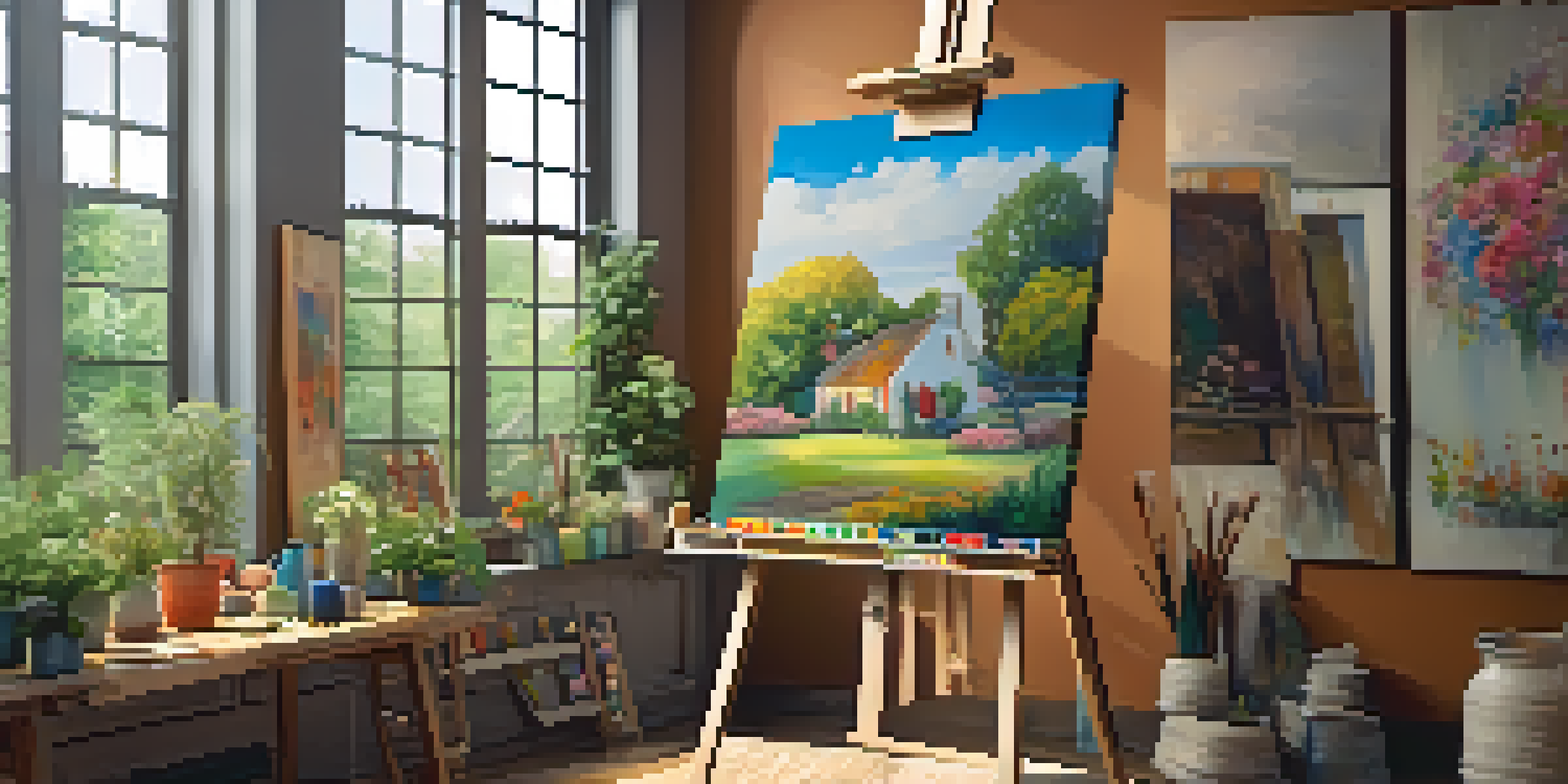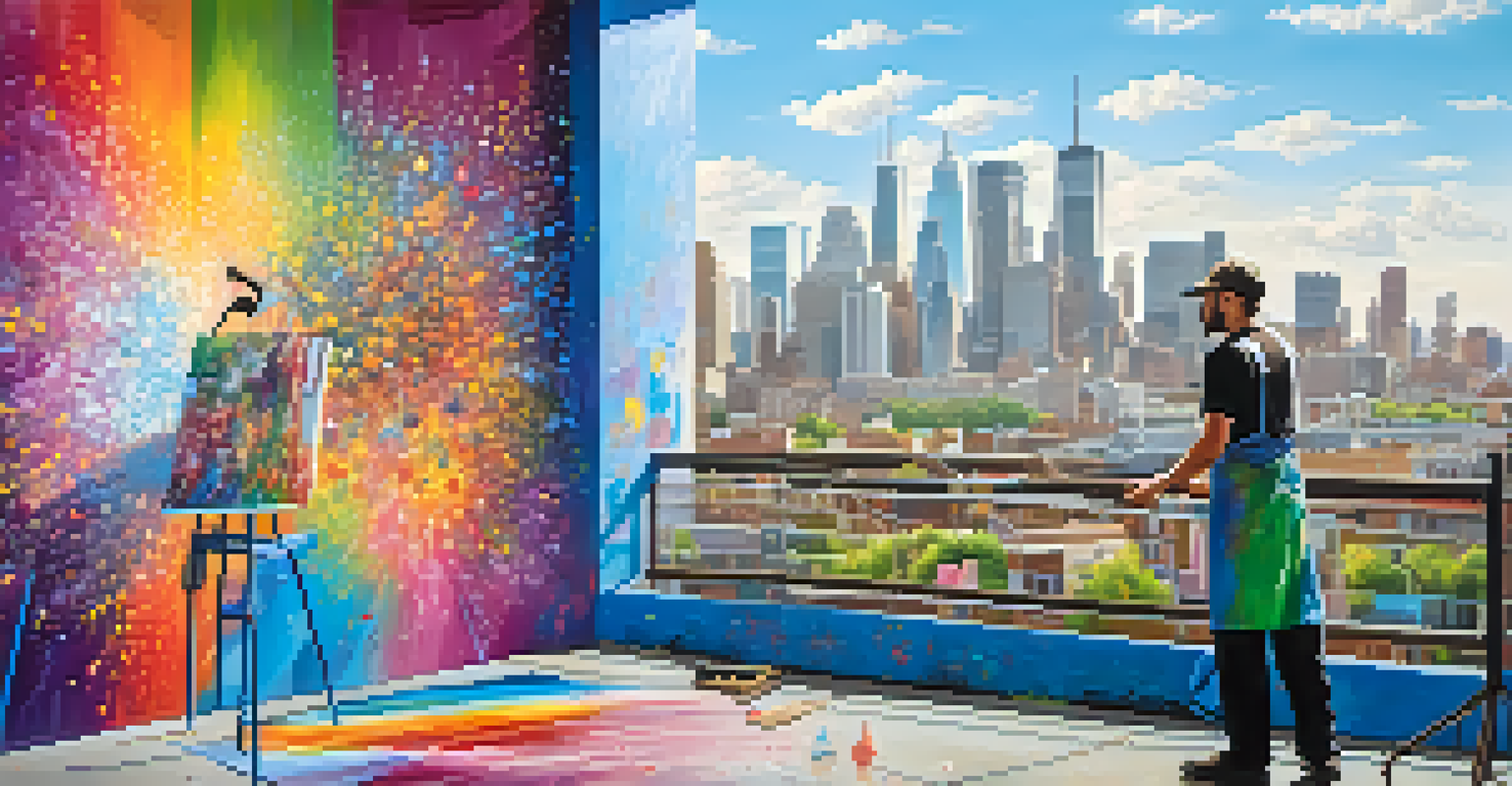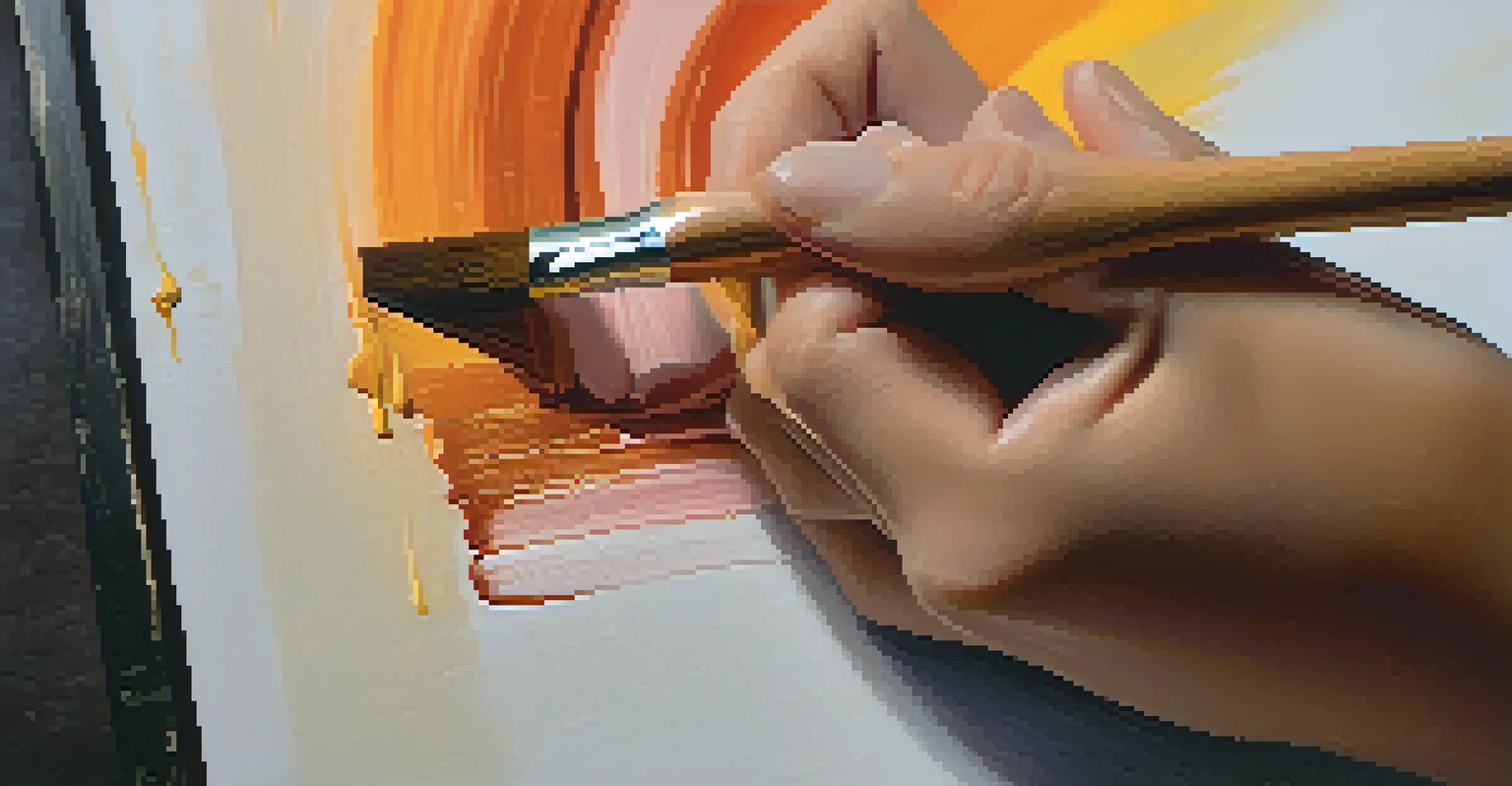Authenticity in Art: The Ethical Dilemmas We Face Today

Understanding Authenticity in the Art World
Authenticity in art refers to the genuineness of a piece, indicating that it is what it claims to be. This concept is crucial because it influences the value and significance of artworks, both financially and culturally. When we think of authenticity, we may envision original paintings or sculptures that capture the true essence of the artist's vision.
Art is the most beautiful of all lies; it is the most beautiful of all truths.
However, as the art market evolves, so do the definitions and perceptions of what constitutes authenticity. With the rise of forgeries and reproductions, the lines have blurred, leading to a growing concern about how we determine an artwork's true essence. This complexity raises important questions about the ethical implications of authenticity.
As we navigate this landscape, it's essential to consider the impact of technology and social media on our understanding of authenticity. With platforms showcasing art from around the world, the notion of an 'original' piece can sometimes feel subjective. This shift challenges artists, collectors, and critics alike to rethink their approach to what art means today.
The Role of Forgery in Art Authenticity
Forged art can create significant ethical dilemmas, as it often deceives buyers and collectors into believing they own something valuable. The existence of skilled forgers raises questions about the integrity of the art market and the criteria we use to authenticate a piece. A famous example is the case of Han van Meegeren, who created forgeries that fooled even the most seasoned experts.

While some may argue that forgery can be an art form in itself, the ethical implications are hard to ignore. Forgers undermine the hard work and creativity of genuine artists, creating a ripple effect of distrust in an already complex market. This situation prompts us to consider how we value originality and the lengths to which some will go to achieve it.
Defining Authenticity in Art
Authenticity in art signifies the genuineness of a piece, impacting its cultural and financial value amidst evolving definitions.
Moreover, the rise of digital art and NFTs (non-fungible tokens) has added another layer to the conversation about forgery. With digital creations easily replicated, the question arises: how can we ensure the authenticity of digital artworks? This ongoing debate highlights the need for clarity and ethical standards in both traditional and digital art.
Cultural Appropriation and Artistic Authenticity
Cultural appropriation presents a significant ethical challenge when discussing authenticity in art. When artists borrow elements from cultures not their own, it raises questions about respect, ownership, and representation. For instance, when a Western artist incorporates Indigenous symbols without understanding their meaning, it can lead to a dilution of the culture's significance.
The artist is not a special kind of person; rather, each person is a special kind of artist.
This issue is further complicated by the commercialization of art, where cultural elements are often packaged and sold without acknowledgment of their origins. This raises ethical concerns about who gets to profit from cultural expressions and the potential harm caused to the communities represented. As audiences, we must be mindful of the stories behind the art we consume.
Navigating cultural authenticity requires a delicate balance between appreciation and appropriation. Encouraging artists to engage with cultures authentically and respectfully fosters a richer artistic dialogue. This approach not only honors the original cultures but also enriches the art world as a whole.
The Impact of Technology on Art Authenticity
Technology has significantly transformed how we create, share, and authenticate art. From digital scanning techniques to blockchain technology, innovations are changing the game for artists and collectors alike. For instance, blockchain can help verify the provenance of an artwork, ensuring that buyers are investing in genuine pieces.
However, while technology offers exciting solutions, it also presents challenges in determining authenticity. For example, the rise of AI-generated art raises the question: can a piece created by an algorithm be considered 'authentic'? This technological evolution pushes us to redefine our understanding of creativity and originality.
Ethics of Forgery in Art
The existence of forgeries raises significant ethical dilemmas, questioning the integrity of the art market and the value we place on originality.
As we embrace these advancements, it's crucial to remain vigilant about the ethical implications. With technology democratizing art access, we must also consider how it impacts traditional artists and their work. Striking a balance between innovation and respect for artistic integrity is essential as we move forward.
Ethical Responsibilities of Artists and Collectors
Both artists and collectors play vital roles in maintaining the integrity of art authenticity. Artists have an ethical responsibility to be transparent about their processes, influences, and the origins of their materials. This honesty fosters trust and respect within the art community, allowing for genuine connections between creators and their audiences.
Collectors, on the other hand, should educate themselves about the pieces they acquire. Understanding the history and context of an artwork can help them appreciate its value beyond monetary worth. By supporting artists who prioritize authenticity, collectors can contribute to a more ethical art market.
Ultimately, fostering a culture of accountability within the art world benefits everyone involved. Encouraging open dialogue about authenticity and ethics can lead to a more vibrant and sustainable artistic community. Together, artists and collectors can champion the values of honesty and respect in their creative endeavors.
The Role of Art Institutions in Authenticity
Art institutions, such as museums and galleries, play a crucial role in upholding standards of authenticity in the art world. They are often seen as gatekeepers of cultural heritage, responsible for verifying and presenting artworks to the public. This authority comes with a significant ethical responsibility to ensure that the pieces they showcase are genuine and accurately represented.
Moreover, institutions are increasingly being called upon to address issues of diversity and inclusion within their collections. By actively engaging with underrepresented artists and cultures, they can promote a broader understanding of authenticity that reflects the complexities of our society. This shift not only enriches their collections but also resonates with a diverse audience.
Technology's Role in Art Integrity
Technological advancements, like blockchain, offer new ways to authenticate art, but also challenge our understanding of creativity and originality.
As art institutions adapt to the changing landscape, they must also embrace transparency in their practices. This includes sharing information about their authentication processes and the criteria they use to evaluate artworks. By fostering trust and openness, institutions can strengthen their credibility and contribute to a more ethical art ecosystem.
Navigating the Future of Authenticity in Art
As we look to the future, the conversation around authenticity in art will continue to evolve. The challenges posed by technology, cultural appropriation, and ethical dilemmas will require ongoing dialogue and collaboration within the art community. Artists, collectors, institutions, and audiences must work together to navigate this complex landscape.
Education will play a pivotal role in shaping the future of art authenticity. By fostering a deeper understanding of the various factors that contribute to authenticity, we can empower individuals to make informed decisions about the art they create and consume. This knowledge can lead to a more respectful and ethical appreciation of art in all its forms.

Ultimately, the quest for authenticity in art is a shared journey. By prioritizing ethics and authenticity, we can create a vibrant art world that honors both the creators and the cultures behind the works. Together, we can ensure that art remains a powerful means of expression and connection for generations to come.